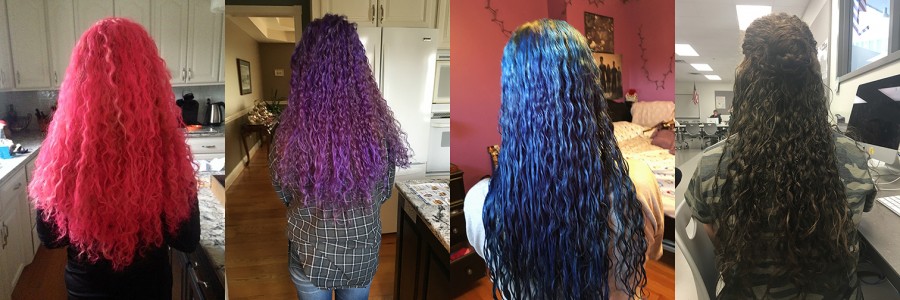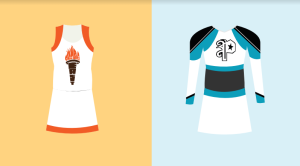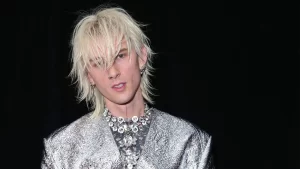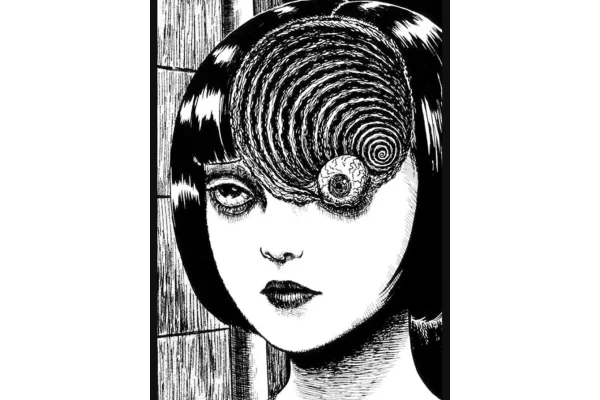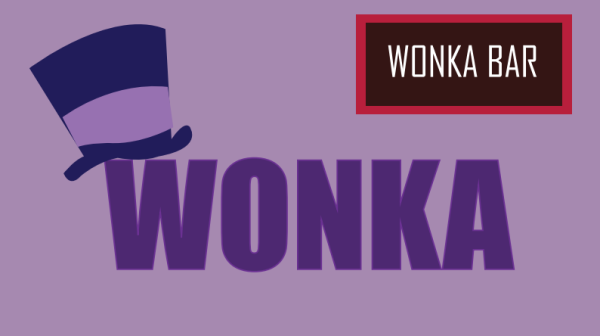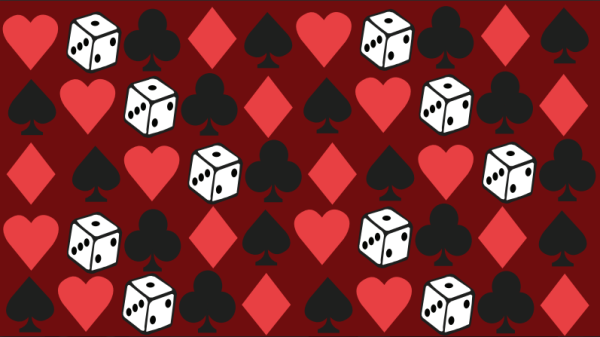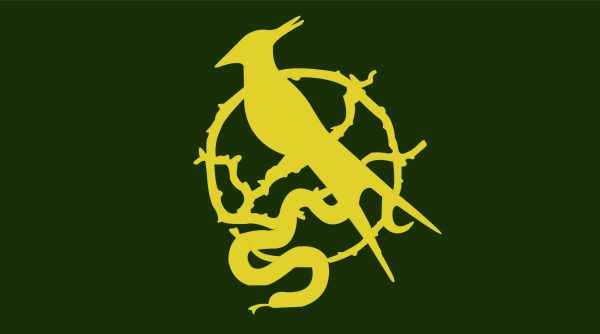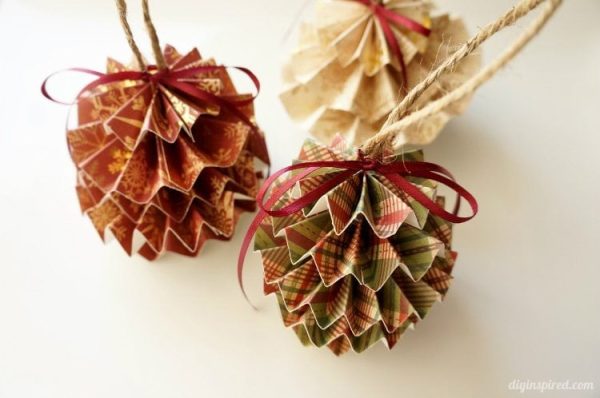How to fix a “hairy” situation
Maggie Lewis, Writer
March 29, 2016
Over the past six months, I’ve probably dyed my hair at least 100 times. Well, maybe not that much, but quite a few. When I first dyed my hair, I went from a darkish brown to almost platinum blonde, safely, without bleaching or stripping my hair of its color. Then, I dyed my hair pink, then blonde again, then purple, and then I had an interesting greenish-brown color for a while. After that, I dyed my hair auburn to try and cancel out the green tint in my hair, but it didn’t work. Finally, I was able to get my hair back to a normal color when I dyed my hair a really dark brown. Now, it’s semi-normal again. Since I’ve absolutely failed multiple times when it comes to hair, I’m going to share my experiences and my tips/tricks so your hair doesn’t get as messed up as mine.
Dark Hair → Blonde Hair:
Anyone can go from a dark hair color to a light color, even if your hair is the darkest shade of black. You’re just going to have to be willing to be patient to get the color that you want. Since I’ve only gone from dark brown to blonde, I’m not completely sure of what it will take to go from, for example, a black to a light brown. Most of hair coloring is all about experimenting and seeing what happens; that’s the only way I learned.
When I went from brown to blonde, it took many trials of dying to get the color I wanted. Your hair thickness and type will depend on the amount of time you have to wait between dying and how much dye your hair can take without getting extremely dry and thirsty. The first boxes of dye I bought was Garnier Nutrisse Ultra Color Haircolor. Because I have a lot of hair, I had to buy three boxes to cover my entire head. It’s always better to buy more than not enough, so be generous on the amount of color you get. Usually, if you have short hair that’s relatively thin, you’ll need one box. If you have thick hair that’s any length below your shoulders, you’ll need two. If your hair is super long like mine was, you’ll need three or more. The box looks like this:
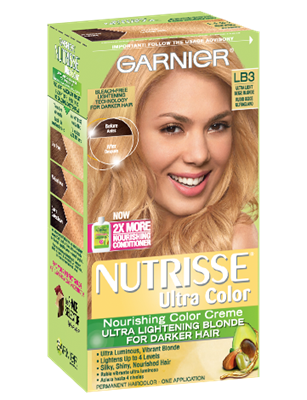
On the side it says that it will take dark hair colors to a natural blonde, but that isn’t necessarily true. When I first used it, my hair went from dark brown to a light brown; it wasn’t blonde yet. After I dyed it a second time, my hair was finally blonde like I wanted it to be. Because of how dark my hair was before, it was really obvious when my hair started to grow and my roots were visible. It looked bad, so I was constantly having to dye my roots. Sometimes the colors wouldn’t match so I’d have to redye my entire head again. So, keep in mind that if you dye your hair a light color, your roots will need to touched up (unless you don’t care, and that’s okay too).
Safe Hair Stripping:
After I dyed my hair purple, I was told I wasn’t allowed to work because it was distracting. So, I had to find a way to remove the color without bleaching so I wouldn’t kill my hair. ALWAYS AVOID BLEACHING IF YOU CAN. Bleaching is not ideal for your hair, especially if it’s thin. To get rid of unnatural colors (i.e. blues, pinks, greens, purples, reds, etc.), you’ll need to buy One 'N Only Colorfix, which you can find at Sally’s Beauty Supply. It costs about $15, so it’s rather expensive, but it’s the only thing I’ve been able to find that does a relatively good job on all hair colors. It looks like this:

When I used this, instead of completely stripping my hair of the purple, it took out different tints of color, which turned it blue. But the blue was easier to dye a different color than the purple because browns and auburns cancel out with blues. The worker I talked to at Sally’s said that she has seen Color Fix take out red, pink, and black hair. Warning: this stuff smells awful, so be prepared for that.
Another kind of stripping dye you can try is Color Oops. It’s a little less than $10 and there are two types (extreme removal and extreme conditioning). This is what is looks like:
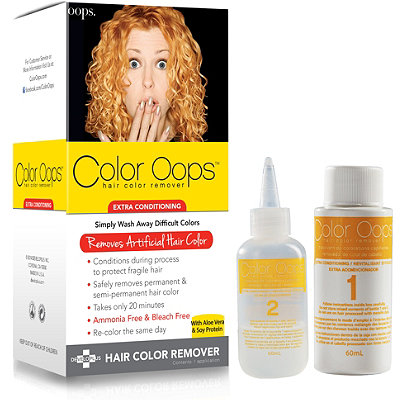
I have not used Color Oops before. It only removes natural hair colors (blondes, blacks, browns) and takes your hair color back to what it was before you dyed it last. For example, if your hair was brown and you tried to give yourself highlights that turned out awful, the Color Oops would get rid of the highlights, leaving the brown like it was before.
Coloring with non-natural dyes:
There are two types of non-natural dyes you can buy: Temporary and Semi-Permanent. When I dyed my hair pink, I used a temporary dye called BWILD COLOR SPRAY by Jerome Russell. The spray is really easy to find. You can buy it almost anywhere. I bought mine at Target, but it’s at CVS, Walgreens, Sally’s Beauty Supply, and even Walmart. The color of your hair will affect the color that takes on your hair. If you have dark hair, the pink will show up as more of a purple, but if you have light hair, it will show up as a pink. Usually the darker colors stay true to what they are supposed to look like no matter what hair color you have, but the lighter colors can be a little iffy. Here’s a picture of the cans:
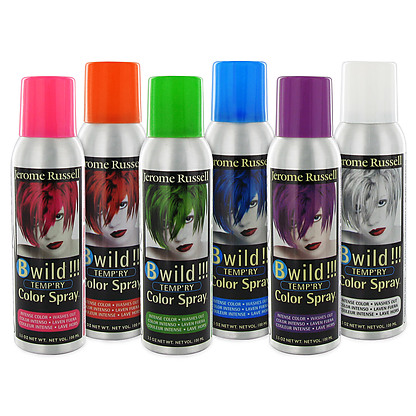
The BWILD cans are small, so it will probably take more than one to cover your entire head. I usually use the same method that I use for regular hair dye when it comes to the amount that you buy. I used three cans the first time I did it and then one more the next day. When you apply this spray, make sure you are outside. Not only does it smell, but it stains anything it comes in contact with. When the spray sets on your hair, it’s going to feel really sticky and dry. Because it’s temporary, it’s only meant to last one wash until you wash your hair.
I did not like the texture of the spray once it was in my hair, so I let it sit for an hour before I put my head under my sink and ran the water until it turned clear. After I did that, the color was still there, but it was less vibrant and it felt natural. In most cases, this won’t happen. Because my hair was so light, the color held onto the lighter parts of my hair and stayed there. If you have darker hair and you wash it out, all of it will probably go away. Honestly, I would only recommend using BWILD if you want your hair a non-natural color for a few days or just for one night. If you want a non-natural color for a longer time, you need to use a semi-permanent dye.
The best semi-permanent dye out there is Ion Color Brilliance. The array of colors offered by Ion are really pretty and they work well with all kinds of hair colors. You can buy the Ion dye at Sally’s Beauty Supply. Here’s what some of the boxes look like:
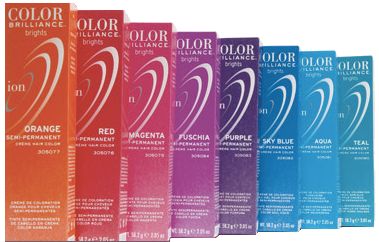
The Ion Color Brilliance dye works very well on all different types of hair colors (I’ll explain the process in a minute). The boxes are very small though. By the time my hair was all said and done, I used about seven boxes, so be aware that you’re going to need quite a bit of it. Personally, I really like this dye because it doesn’t smell bad when you apply it to your hair, it doesn’t take long to set, and you can see the results almost as soon as you put it on. When I bought the Ion dye, I chose the lavender color because I wanted a light purple, but it didn’t really turn out that way. Around the same time, my cousin dyed her hair with the magenta and since she had darker hair than me at the time, I’ll be able to explain how we were able to get it to the color we wanted.
The first thing you should do before you dye your hair to a non-natural color is apply a clear protein spray to your hair. You can buy protein spray at Sally’s Beauty Supply (if you haven’t figured it out already, that’s where you pretty much buy everything). Make sure that you don’t get a colored one, though. Read the fine print. Protein acts like a filler for your hair. By spraying protein on it before you dye, you open up your hair follicles so the color takes better to your hair. Most of the time non-natural dyes can be extremely difficult to work with because of the nature of the ingredients inside of them, but nothing is impossible and you can do it.
After you apply protein, you apply the dye to your hair just like any other dye. Make sure that you put a lot of it at your roots because they never take color as well as the rest of your hair. After you let the color sit and you wash it out, let it dry before you decide if you like the color or not. If you decide it’s too light, dye it again (especially if it didn’t take in your roots). If you decide it’s too dark, make a mix of three Vitamin C Tablets and a small bowl of dandruff shampoo. After you mix it, apply it to your hair and let it sit for 15 minutes. Then, wash it out until the water runs clear. You will be able to see the dye coming out in the water, but it’s not completely taking it away. Remember: every time you shampoo your hair, the dye will come out a little bit, so either wait as long as you can between shampoos or use a cheap, uncolored shampoo. If you decide that the color is still too dark, make the dandruff shampoo and Vitamin C mix as many times as you need to until you get the color you want. Dark hair will be more difficult to get the color you want out of, so be patient and use as much protein as you can. It may take quite a few applications to get your desired color.
Non-natural Color → Natural Color:
Once I was told I had to dye my hair back to a natural color, I really wasn’t sure what to do. It’s hard to cover up a color like purple without bleaching, but I was able to do it. The first thing I did was use a box of the Color Fix, which turned my hair blue. After my hair turned blue, I applied a brown protein to my hair so the color would take and then I dyed it auburn with L'Oréal Mousse Absolue.
Personally, I prefer mousse dyes because I feel like they cover hair better than regular dyes, they come pre-mixed, and they don’t smell bad. After one application of the dye, the blue was nonexistent, so it worked. This is the color I got:

I went on with life like normal, but after a couple of weeks, my hair started to turn green. Apparently, my hair was dried out on the ends and the shampoo I was using was reacting to all of the dye, which was causing the green tint. There wasn’t a way to get rid of it, so I dyed my hair auburn again to cancel it out. This is the color dye I used the second time:

The second box of dye was more red than the first and it turned my hair the red/auburn I was looking for. The first box just made my hair a sort of dull grayish-brown. After a few weeks, I still couldn’t get my hair to stop turning green and I was starting to think I was going to have to bleach my hair. So, I dyed my hair one more time with a dark, almost black, brown and it fixed my hair. Now, my hair is back to brown and back to normal. Obviously from this annoying experience, I learned that I should’ve just dyed my hair dark brown the first time instead of shooting for the auburn. So learn from me: just dye it super dark if it starts to turn green.
Healing dead hair:
After dying my hair so many times, it was obvious that my hair was dying. Your hair can only take so much before it starts to dry out, but I’m hoping that by reading this, you’ll be able to minimize the damage done to your hair. To help heal my hair and get it back to normal, I only shampooed my hair one or two times a week and deep conditioned every day to get my hair healthier and stronger. If you make sure to take care of your hair after dying, you’ll get strong, awesome hair that everyone will love.


